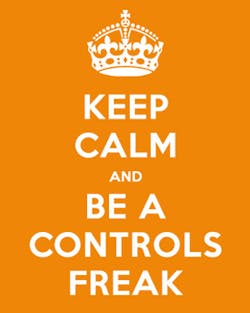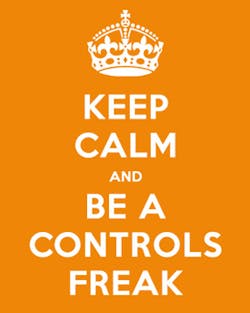101 Ways to ‘Rock’ as a Building-Automation and Controls Technician, Part 1 of 4
Controls technicians are the vital link between your building-control system designs and your customers. If you work with or know someone who wants to become a “controls freak”-style technician in the building-automation and controls industry, you have to check out these 101 ways they can make it happen.
Here are the first 25. Keep an eye on upcoming editions of Networked Controls Plus for the rest of the list!
1. Learn about and understand the mechanical systems you are controlling.
2. Don’t point the finger (or any fingers) at the “other guy.” Find out what the problem is and tell the right person to call another right person who can actually fix the problem. Be the hero and the first person the customer calls.
3. Know how to find complicated calculations with some explanation on how to use them. As a great controls technician you have to become part engineer. I like www.rapidtables.com and www.engineeringtoolbox.com.
4. Be aware that the engineers don’t always get it right. If you identify problems with a system, you must be able to know how to make suggestions without coming off as a know-it-all or saying “You’re wrong.”
5. Know the date when the electricians will have power to the mechanical units. Not more than one day after the electricians have put power to the units with in-factory startup, the general or mechanical contractor will want you to have it under control and operating in “auto.”
6. When selecting parts for a project or replacement, be sure to know the incoming and outgoing signals and match them to those same inputs and outputs at the other end.
7. Use a multimeter that you can understand and know how to work. Don’t go using the highest-dollar meter if you have problems setting the units or placing the decimal in the right spot. Messing up a reading can cause you to overlook a problem or create one.
8. Never put inputs in manual mode unless you already know the sensor is bad, in the process of replacing it and there are too many outputs that use that value. It is just bad practice to mess with inputs. It is better to place the outputs that are affected by the bad sensor in manual — unless there are too many to deal with.
9. Do point-to-point checkouts on every project. Before there is programming you can operate, turn on/off and modulate every output to be sure it is doing what is expected. For every input, make sure the reading is what is expected and compare it to some other test tool or hand-held sensor.
10. Contribute your experiences, success or challenges to an online forum or website. The things you think are simple, someone else wants to learn more about for the first time.
11. Help the air-balancing contractor understand your software and know what settings he needs to adjust to do his job. You do not want him to turn in a report with issues that you will have to field verify and find out they just were not reading the numbers right or were not saving his changes to your controllers.
12. Save your programming and setpoint changes. It is a pain to make a change today, forget to save, and then when the power blips a month later to be stuck trying to remember what you changed or have to make that one change to all 99 controllers again.
13. Spell everything correctly. It drives me nuts to see a customer pay tens of thousands or even millions of dollars for a building-automation system and see words like “Condesor,” “Temprature,” or “Presure.”
14. Know when the equipment is to be delivered on-site and in place from the mechanical contractor way ahead of time.
15. Alarms based on a setpoint should have ranges that will not cause nuisance alarms that will soon get ignored.
16. Avoid installing wall sensors before the final paint. Even with tape they always end up with paint on them and someone has to remove it or pay to replace. Work something out or get signatures.
17. When pulling cable in the open above ceiling do not zig-zag up/down or left/right. Try to stick to some sort of common pathway. It makes it easier to pull and easier to work with after the fact.
18. Buy a couple of books related to controls or mechanical systems and share them with others.
19. If you use a solid backplate for your enclosures, mock up the back side of one backplate with a marker and lay all the components out before drilling holes. It looks cheap and poorly done when empty holes are left showing on a finished install.
20. Do not use zip-ties inside of Panduit. That is what the Panduit is for: to keep the wires together but hidden. Once you zip-tie it all together then you can't tug on wires to trace where they go.
21. Label each wire before it terminates. If it comes out you know where it should go.
22. Use the right tool for the job. You will get things done faster, break less stuff and break less tools.
23. Work smarter, not harder.
24. Always perform your work using two of the three items in the “project management triangle:” fast, good, and cheap. Never offer all three, and controls freaks never do only one.
25. After dealing with an issue or leaving a meeting, follow up with an email. It shows professionalism not found in many technicians.


